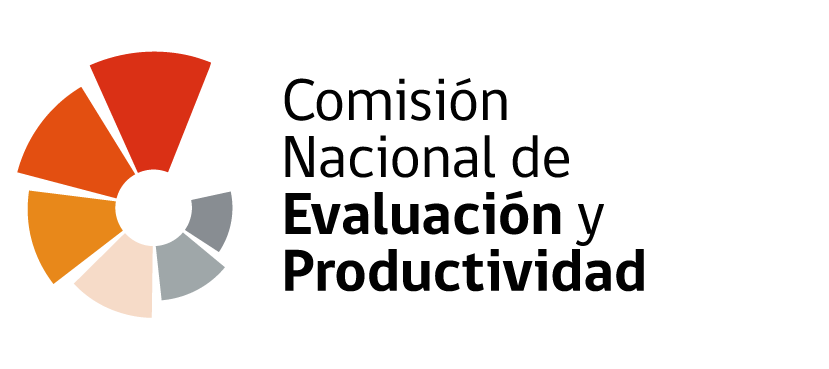
23 Oct The majority do not use the Internet for productive purposes, and it would take decades to improve the digital skills that the population claims to need.
Despite Chile having the highest percentage of people using the Internet in Latin America compared to OECD countries, it needs to catch up in using this technology for productive purposes. The majority use the Internet for communication or entertainment.
When estimating the impact of internet usage on micro and small businesses (MSMEs), the National Commission for Evaluation and Productivity (CNEP) warns that it is associated with an average 5.6% improvement in labor productivity.
The most significant barriers in Chile regarding internet usage are related to human capital. The gap in professionals in information and communication technologies (ICT) reaches nearly 5,000 people annually, and 40% of the employed population states that they need more training. However, data shows that only 76,840 people per year receive training.
In this sense, it would take around 48 years to cover the population that declared a more significant need for digital skills training in 2022.
Meanwhile, in the school curriculum in Chile, there is no explicit provision for the development of knowledge or intermediate and advanced skills in ICT, and there is only one technology or computer teacher for every 204 schools.
As for the quality gap in internet access (defined mainly based on broadband speed and service continuity), Chile reflects two realities. On the one hand, it ranks as the second country in the world in terms of fixed network download speed, and on the other hand, it shows severe territorial inequality. Downloading information from the fixed network in regions with lower rates is four times slower than in areas with higher speeds.
Another significant indicator of quality is service continuity. In Chile, between 2018 and 2021, massive interruptions increased by 151.4%. Maintenance was the leading cause, and a plan of action is still pending.
Estimates from CNEP show that if the interruptions that occurred in 2021 alone affected 10% of businesses and households in the country, the cost would be $113.7 billion, equivalent to around 0.1% of GDP.
The details of the digital divide that Chile faces, in terms of internet use and quality, have just been published by CNEP as part of the progress of the research mandated by the Government of Chile in 2022, “Productivity in the Telecommunications Sector.”
At the local level, the digital divide, seen as the contrast between those who use, access, and have quality service and fiber optic coverage and those who do not, is mainly manifested in terms of how the Internet is used. The lack of digital skills has a significant impact, with unequal quality across the territory, lack of access in low-resource areas, and no fiber optic coverage for 5.6 million people.
Digital skills gap and lack of productive internet use
Evidence shows that both the use and access to technology increase well-being, business productivity, and the efficiency and effectiveness of the state. It is a crucial ingredient for digital transformation and economic growth.
In Chile, 86% of people over 16 years old use the Internet regularly. However, the primary use is related to communication and entertainment, with 76% and 63%, respectively.
When comparing Chile to OECD countries, it is observed that the country lags in the proportion of people using the Internet for productive purposes. Specifically, Chile has less than twice the penetration in areas such as e-banking, interaction with the government, and information search compared to the OECD average.
Regarding business access to the Internet, there has been a rising trend since 2010. By 2022, it is estimated that there will be 0.4 and 2.2 commercial internet contracts per company for fixed and mobile networks, respectively.
The greater internet penetration has translated into a higher proportion of service usage, especially for large companies. Data shows that 90% of these companies contract professional services related to the Internet (hosting and data processing, website development, and digital sales channels, among others). In comparison, small and micro-enterprises lag with 59% and 40%, respectively.
Estimations for Chile based on SII data between 2016 and 2021 show the impact of digital technologies on MSMEs. Specifically, internet usage translates to an average improvement of about 5.6% in labor productivity.
Based on the evidence collected for this research, the most significant barrier restricting greater ICT use in smaller businesses is the limitation of human capital.
The gap in professionals in information technology (IT) amounts to nearly 5,000 people per year, especially in areas like cybersecurity, website development, everyday office tools, and collaboration software (OECD, 2023). Additionally, only 3.7% of university graduates 2021 graduated in this area, one of the lowest proportions among OECD countries (OECD, 2021).
Furthermore, since 2017, companies have reported difficulty in filling specialist vacancies. Data from the ICT Survey 2018 showed that 30% had trouble due to lacking applicants, and 18% stated that candidates did not have the necessary skills for the position.
Also, surveys conducted in 2022 reveal that Chileans perceive a deficit in digital skills to complete their tasks at work. Figures show that around 34% of working-age individuals declare the need for more training or education in digital skills, equivalent to nearly 5.5 million people. This proportion is even higher when considering only the employed population, of which 41% state the need for more excellent digital skills.
In Chile, the development of intermediate (such as data and text management software) and advanced knowledge, skills, and competencies (such as algorithm creation and evaluation or coding) is not part of the school curriculum. This situation contrasts with leading countries, which tend to incorporate it into their curriculum explicitly.
Additionally, there is a specialized teacher (with a mention in technology or computing) for every 204 schools. Furthermore, the need for standardized and systematic measurements to monitor the state of digital skills reduces the ability to evaluate the effectiveness of educational policies and identify gaps.
The last massive measurement of digital skills was implemented by MINEDUC in 2013 (MINEDUC, 2014), which revealed that nearly 50% of students had a basic level, and only 2% had advanced skills to evaluate information obtained on the Internet and its risks.
To reduce the digital skills gap, the CNEP Council recommends that the Chilean government modify the national curriculum to explicitly incorporate the development of digital skills or ICT and regularly assess the level of digital skills in students.
Also, there must be a match between the potential demand for developing digital skills and the training offerings for workers. While around 40% of the employed population (equivalent to almost 3.7 million people) declares the need for more excellent training or education in digital skills, only about 76,840 people per year are trained through SENCE (the primary public training tool). Thus, if the training pace were to be maintained, it would take about 48 years to cover the population that declared more significant needs for training or education in digital skills in 2022.
Another aspect observed regarding usage is at the government level. Although by December 2022, 89% of central government procedures are entirely online, there remains a gap regarding ease of interaction. Specifically, 31% of those applying for government bonuses, subsidies, or programs state it is difficult (Employment-UC Survey, 2022).
On the other hand, there are institutional shortcomings in promoting the use of ICT in the government. For example, the Government Digital Division, despite having the mandate to coordinate, advise, and support the strategic use of digital technologies, data, and public information, lacks regulatory powers to set standards (e.g., the use of cross-platforms like ClaveÚnica) and does not have an explicit mandate for the development of cross-platforms. Therefore, CNEP recommends creating a Digital Government institution with regulatory and supervisory powers in line with what the OECD recommended for Chile in 2016.
Territorial inequality in internet quality and increased massive interruptions
According to analyses conducted by the OECD, having quality metrics such as speed or interruptions is relevant not only for users, who can have better information about service quality but also for regulators, as it allows them to focus policies to ensure quality access to services such as health, education, public services, etc.
Based on the information provided by Ookla (a global company measuring and analyzing the speed of mobile and fixed networks), Chile ranks second in the world regarding perceived download speed for fixed networks and about half of the reference countries in mobile speed.
In recent years, the growth in average download speed in Chile has been exponential, increasing from 26.7 Mbps in 2017 to 258.3 Mbps in 2022. However, the download speed varies across the territory for fixed and mobile networks. Downloading information from the selected web in Arica and Parinacota (a region with a lower rate) is four times slower than in Santiago (an area with a higher speed). Moreover, today, mobile network download speed is almost five times faster than it was five years ago, and doing so from Tarapacá (a region with a lower rate) is twice as slow as doing it from the Metropolitan Region (with a higher speed).
Another significant indicator of service quality is service continuity, measured through the frequency and extent of interruptions.
According to company information, between 2018 and 2021, massive interruptions increased by 151.4%, from a quarterly average of 27,934 to 70,214 events.
While maintenance was the leading cause of interruptions (accounting for 69% of cases annually), Chile does not have specific sectoral regulations that establish minimum and common characteristics for network management and maintenance. It is worth noting that the General Telecommunications Law (1982) demonstrates the need to publish a network management and maintenance plan, but as of June 2023, such a plan has yet to be published. The impact of internet interruptions is considerable. According to CNEP estimates, if the interruptions that occurred in 2021 alone affected 10% of businesses and households in the country, this would imply an estimated cost of $113.7 billion, equivalent to about 0.1% of GDP.



